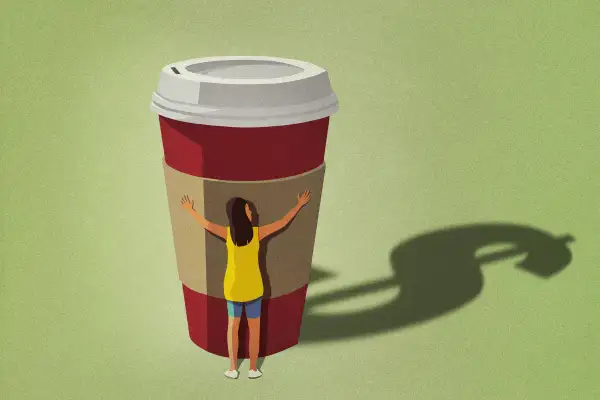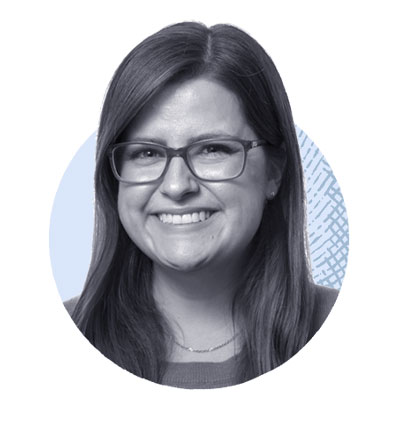Can Skipping Avocado Toast and Lattes Really Help You Buy a House?
Money is not a client of any investment adviser featured on this page. The information provided on this page is for educational purposes only and is not intended as investment advice. Money does not offer advisory services.

We all have our vices, and they come at a cost — literally. The average American shells out thousands of dollars annually on bad habits: a figure that is likely to continue climbing.
According to Grand View Research, between 2023 and 2030, the alcoholic drinks market is expected to grow by 9.7%, the legalized recreational marijuana market is expected to grow by 25.7%, and the e-cigarette and vape market is expected to grow by 29.8%. The fast food market is set to hit $851.34 billion by 2029, and coffee consumption is at an all-time high.
Americans aren't giving up their vices anytime soon. If they were, the investment industry wouldn't offer products like an ETF — ticker symbol VICE — that provides exposure to industries including alcohol, gaming and tobacco. Our economy is driven by consumption, and consumption often relies on indulgences. Realizing their monetary impact is useful — for example, the opportunity cost of buying a strawberry cheesecake-flavored vape pen each week rather than investing that money.
As Money's investing editor, I understand that reallocating the money spent on Starbucks isn't going to remediate the affordability crisis Americans currently face. But headlines sometimes suggest otherwise. There's been no shortage of media coverage misattributing younger generations' financial shortcomings to their propensity for instant gratification.
So I crunched some numbers to determine if younger people who curtail their societally deemed undesirable habits could, in fact, bypass generational stereotypes and achieve the American dream. In other words: Can cutting out avocado toast really help someone afford a house?
Home affordability then and now
First, context is helpful. Boomers' financial success can be partially attributed to coming of age during the greatest economic expansion in American history. The post-war era (1945–1968) was a period of unparalleled growth and prosperity, with upward mobility fueled by robust job markets and affordable housing. Yes, perhaps some of them pulled themselves up by their bootstraps. But by and large, the macro environment was conducive to their collective financial success.
Take, for example, the home-price-to-income ratio, which last year hit an all-time high. Historically, the average cost of a house in the U.S. has been around five times the median annual household income. In 1964, when the oldest boomers turned 18, the ratio was as low as 4.14. In 1974, it was 3.64, and in 1984, it was 4.11. Between 1964 and 2001, the ratio never exceeded its historical average of five.
But by November 2024, it had climbed to 7.31 — a record (and higher than at the peak of the last housing bubble).
Wages haven't kept apace of surging home values. According to the Federal Reserve Bank of St. Louis, in the fourth quarter of 2024, the median sales price of a home in the U.S. was $419,200, up from $169,800 in the first quarter of 2001 — a 146.88% gain. At the same time, median household income grew by only 17.05%, meaning that from 2001 to 2024, increases in housing have outpaced income growth by an astounding 129.83%.
Accusations of entitlement and overconsumption of lattes aside, one reason home ownership in the U.S. is on the decline is because the typical down payment now exceeds $63,000. So how many lattes would an aspiring homeowner need to sacrifice in order to afford a home in the not-so-distant future? Let's find out.
Methodology and assumptions
Expenditures: Based on the Bureau of Labor Statistics' consumer expenditure data, the average American spends $7,008 annually on alcohol, tobacco/smoking supplies, meals away from home and entertainment. I included that last category to account for purchases like Taylor Swift concerts and season tickets to watch the Marlins finish in last place (again).
Inflation: That average annual expenditure translates to $584 per month, of which I will use 50% as the starting point for the calculation's recurring contribution. This is an exercise to determine the feasibility of using some money reallocated from younger folks' vices to invest toward a home purchase (by no means am I advocating for deprivation). That figure — $292 per month — will increase by 3.3% annually to account for the average rate of inflation from 1914 to 2025.
ROI and compound interest: I'll also be factoring for interest compounded annually, since the stock market's returns are often presented as annualized data. Additionally, I'll assume for an average annual return on investment of 10%, which is the S&P 500's historical average (including reinvested dividends) since the index's inception in 1957.
Home price: Using the median home value of $419,200 as a baseline, I'll factor for an average annual increase of 4%, which aligns with the historical rate of real estate appreciation, and I'll adjust that figure accordingly to determine the amount of a 20% down payment — the minimum required to avoid private mortgage insurance on a conventional loan.
The results
After one year of halving the money you spend on your vices, that $292 monthly contribution to an S&P 500 index fund has turned into $3,504. You're still 99.02% away from the $87,193.60 down payment required for a $435,968 home in 2026.
After two years, that $3,504 principal has grown to $7,466.40 based on monthly contributions of $301.63 (the original $292 readjusted for 3.3% inflation). That's still not enough for a 300-square-foot tiny home, let alone the $90,681.34 down payment required for a median home price of $453,406.72 in 2027.
Let's fast-forward:
- After five years: $22,674.69 invested, $510,020.89 home value requiring a $102,004.17 down payment
- After 10 years: $63,194.07 invested, $620,518.39 home value requiring a $124,103.67 down payment
- After 15 years: $133,155.52 invested, $754,955.50 home value requiring a $150,991.10 down payment
- After 20 years: $251,350.67 invested, $918,518.80 home value requiring a $183,703.76 down payment
- After 25 years: $448,226.14 invested, $1,117,518.56 home value requiring a $223,503.71 down payment
The sweet spot is 17 years. The hypothetical infant you had at the beginning of this scenario is college-bound and climate change has destroyed the global avocado crop, so your fancy toast habit is moot.
Your friends' FOMO has resulted in Instagram Stories from Mykonos to the Maldives, but money spent is more easily seen than money saved. At the 17-year mark, you've finally exceeded the 20% required for a down payment on a median-priced home. By the time you hit 20 years, you'll have amassed more than a quarter-million, and after 25 years, that figure has grown to nearly $450,000.
So: Conceivably, it can be done. Homeownership achieved!
Conclusion
Is it better for your financial (and physiological) well-being to cut back on some of your vices? Absolutely. Will those savings translate into enough money to purchase a home in today's market? Absolutely not. But will they help with a down payment on a home in the future? Eventually.
However, a $63,000 down payment now or $223,503.71 down payment in 25 years is a lot of lattes. It would take a decade just to accumulate enough money for the 20% down payment required to buy a house at today's prices, 13 years to save $100,000 and and more than 24 years to stockpile enough money to satisfy a 20% down payment on a then-median $1 million home.
As those numbers illustrate, simply reducing your indulgent spending habits is an unrealistic approach to surmounting the runaway housing costs and inadequate wage gains young Americans face today. Still, being stricter with your budget (and kinder to your health) can result in a sizable nest egg in the future. By starting with $292 per month conservatively invested in an index fund, you can potentially grow your balance to $448,226.14 in 25 years with discipline, patience and fewer vape pens.
For the record, I'm a homeowner. But that has nothing to do with the fact that I never drink coffee and always make my avocado toast at home.
More from Money:
Why Stock Market Volatility Has Risen 85% Since Trump's Inauguration
Cash Isn't King: Why Investors Shouldn't Sideline Their Money Right Now
Better Than a Piggy Bank: 3 Ways to Invest for Your Kid's Future





